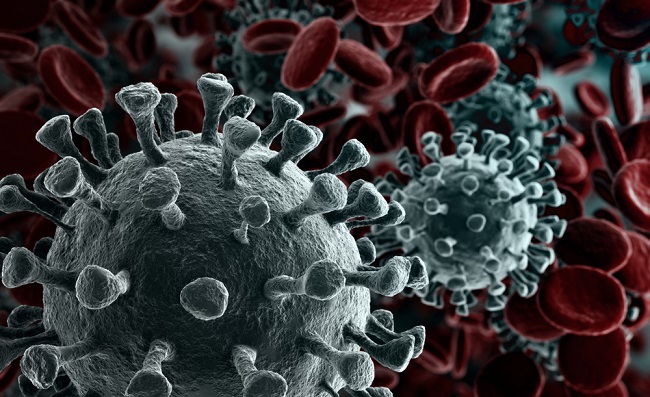COVID-19 tied to wildlife sales at Chinese market; alternative scenarios extremely unlikely
Published: 27 July 2022
Analyses based on locations and viral genome sequencing of early COVID-19 cases show the pandemic started in Wuhan’s Huanan market in late 2019
Analyses based on locations and viral genome sequencing of early COVID-19 cases show the pandemic started in Wuhan’s Huanan market in late 2019.
Researchers, including Professor David L Roberson at the MRC-University of Glasgow Centre for Virus Research (CVR), have confirmed that live animals sold at the Huanan Seafood Wholesale Market were the likely source of the COVID-19 pandemic that has claimed 6.4 million lives since it began in late 2019.

Led by Michael Worobey at the University of Arizona and Kristian Andersen at the Scripps Research Institute in San Diego, the international team of researchers have conclusively traced the start of the pandemic to the market in Wuhan, China. Their findings were published Tuesday in the journal Science, after being previously released in a pre-print version in February.
The team of researchers examined the geographic pattern of COVID-19 cases in the first month of the outbreak, December 2019 and were able to determine the locations of almost all of the 174 COVID-19 cases identified by the World Health Organization that month, 155 of which were in Wuhan. The study scrutinised the locations of the first known COVID-19 cases, as well as swab samples taken from surfaces at various locations at the market.
Analyses of the data showed that these cases were clustered tightly around the Huanan market, whereas later cases were dispersed widely throughout Wuhan – a city of 11 million people. Notably, the researchers found that a striking percentage of early COVID patients with no known connection to the market – meaning they neither worked there nor shopped there – turned out to live near the market. This supports the Huanan market being the epicenter of the epidemic with vendors getting infected first and setting off a chain of infections among community members in the surrounding area.
Professor Robertson said: “In early 2020 it was puzzling why many of the early cases weren’t linked to Huanan market but, given what we know now about the frequency of mild or asymptomatic cases, this is exactly what would be expected and why the severe cases were not obviously linked to each other. That these cases not connected to the Huanan market lived close by is very compelling evidence that this location was the epicentre of the pandemic.”
This aspect of the study addressed the important question of whether health authorities found cases around the market simply because that's where they looked.
Lead author Michael Worobey from the University of Arizona, said: "It is important to realize that all these cases were people who were identified because they were hospitalized. None were mild cases that might have been identified by knocking on doors of people who lived near the market and asking if they felt ill. In other words, these patients were recorded because they were in the hospital, not because of where they lived."
The study examined at swab samples taken from market surfaces like floors and cages after the Huanan market was closed. Samples that tested positive for SARS-CoV-2 were significantly associated with stalls selling live wildlife.
The researchers also report that mammals now known to be susceptible to SARS-CoV-2, including red foxes, hog badgers and raccoon dogs, were sold live at the Huanan market in the weeks preceding the first recorded COVID-19 cases. The scientists developed a detailed map of the market and showed that SARS-CoV-2-positive samples reported by Chinese researchers in early 2020 showed a clear association with the western portion of the market, where live or freshly butchered animals were sold in late 2019.
A linked study, published at the same time in Science <https://www.science.org/doi/10.1126/science.abp8337>, shows that two variants were transmitted to humans and seeded the pandemic by establishing two lineages A and B in November or early December 2019.
Together these studies provide evidence that COVID-19 originated via host jumps from animals to humans at the Huanan market, likely following transmission to those animals from coronavirus-carrying bats in the wild or on farms in China. These intermediate animal species were likely fairly transient as viruses closely related to SARS-CoV-2 are found in China and Southeast Asia.
Moving forward, the researchers say scientists and public officials should seek better understanding of the wildlife trade in China and elsewhere and promote more comprehensive testing of live animals sold in markets to lower the risk of future pandemics.
Professor Robertson said: “This research conclusively shows that just like the first SARS virus, COVID-19’s emergence is the result of human contact with infected animals at live-animal markets. This is an important topic to understand as we need to get better at preventing future pandemics.”
Enquiries: ali.howard@glasgow.ac.uk or elizabeth.mcmeekin@glasgow.ac.uk / 0141 330 6557 or 0141 330 4831
First published: 27 July 2022
<< July

